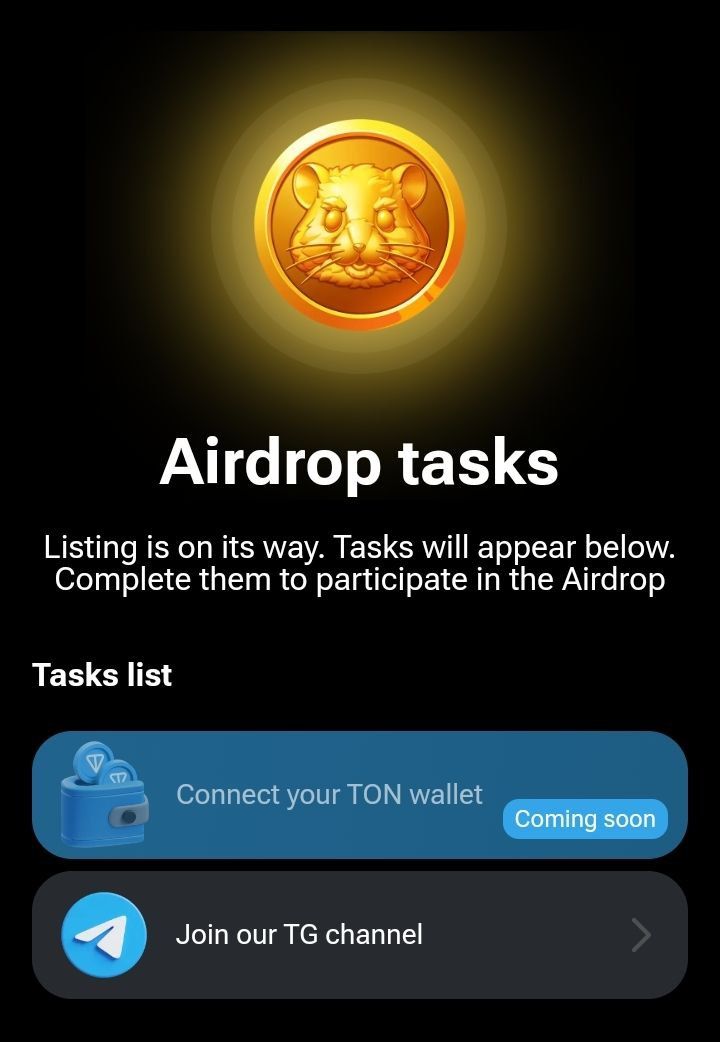Hamster Kombat: Wallet Connection
Let's look at the process of connecting a wallet to the application, the difference between custodial and non-custodial wallets, as well as the details of sending tokens to the exchange and using the MEMO field.
The video (click on the link below for a transcript of this video) tells that after a while you will need to connect your wallet to withdraw funds, let’s look at the topic of wallets in more detail.

Connecting a wallet to the application
When you connect your cryptocurrency wallet to an app, you typically do so to interact with decentralized applications (dApps), conduct transactions, view balances, and manage your assets.
Steps to connect a wallet may include:
- Wallet selection: The application will offer different wallet options, such as MetaMask, Trust Wallet, Ledger and others.
- Authentication: Enter or scan the QR code that is displayed in the application using your cryptocurrency wallet.
- Access Permission: Confirm the permissions the application requests to access your assets.
Custodial and non-custodial wallet
Custodial Wallet
A custodial wallet is a wallet where a third party (such as an exchange or service) manages your private keys. In this case, you are essentially entrusting your assets to this third party.
Pros:
- Ease of use
- Restoring access if you forgot your password
- Technical support
Minuses:
- Potential security risks as third party service may be hacked
- Lack of complete control over your assets
Examples of custodial wallets
Popular examples of custodial wallets include:
- Binance: This is one of the largest cryptocurrency exchanges in the world and provides custodial wallets to store your assets. (The exchange prohibits verification from Russia)
- Coinbase: An American cryptocurrency platform that also offers custodial wallets for its users.
- Kraken: Another well-known exchange that provides custodial services.
- Crypto.com: A platform offering cryptocurrency storage and management services.
- Gemini: American exchange and cryptocurrency storage service.
- BitGo: Platform providing custody solutions for institutional and individual clients.
Wallets on the TON network
A custodial wallet means that a third party (wallet service) manages your private keys and takes responsibility for the security of your funds.
Advantages of a custodial wallet in Telegram:
- Easy to use: Easily integrates with the Telegram app and provides a user-friendly interface.
- Automation and convenience: Allows you to quickly and easily make transactions directly through Telegram.
- Confirmation and restoration of access: There is less risk of losing access to assets if you forget your password, since the support service can help restore access.
Custodial wallets
- Crypto Bot is a multi-currency wallet in Telegram for storing, sending and receiving TON, USDT, ERC20, TRC20, BEP20), BTC, LTC, ETH, BNB, TRX, USDC, GRAM and NOT coins using an internal wallet.
- xRocket is a convenient bot wallet for receiving, sending, purchasing and storing cryptocurrency in Telegram. xRocket offers an intuitive interface and instant transactions.
- Wallet or Telegram wallet is custodial and self-custodial in one application.
Non-Custodial Wallet
Non-costodial wallets are wallets where the user manages his own private keys, which provides complete control over assets
Pros:
- Full control over your assets
- Increased security when storing keys correctly
Minuses:
- Safety is your responsibility
- Difficulty in restoring access if keys or seed phrases are lost
Examples of non-costodial wallets
- MetaMask: One of the most popular non-costodial wallets for Ethereum and ERC-20 tokens.
- Trust Wallet: A multi-currency wallet that supports multiple blockchains including Ethereum, Binance Smart Chain, and many more.
- Ledger Nano S/X: Hardware wallets that offer a high level of security for storing cryptocurrencies.
- Exodus: Desktop and mobile wallet with support for many cryptocurrencies.
- MyEtherWallet (MEW): Non-costodial wallet for Ethereum and ERC-20 tokens, providing a convenient interface for working with assets.
Examples of non-costodial wallets on the TON network
There are also non-costodial wallets for the TON network:
- TON Wallet: Official non-costodial wallet for the TON network, designed to manage TON tokens. Supports transactions, asset management and interaction with decentralized applications on the TON network.
- Tonkeeper: Non-costodial mobile wallet for the TON network with support for iOS and Android. Simple and convenient interface for conducting transactions and managing TON tokens. The application gives the user full control over their private keys.
- TON Surf: A non-costodial wallet and decentralized application (dApp) for interacting with the TON network. Surf offers a unique interface for managing assets, performing transactions and using various decentralized TON services. Supports multi-signature and other security features.
These non-custodial wallets provide users with complete control over their private keys and assets, making them more secure when used correctly. They are ideal for those who prefer to maintain full control over their cryptocurrencies, especially on the TON network. More wallets
How to send tokens to the exchange and use the MEMO field
Sending tokens to the exchange
When you submit tokens to an exchange, the process typically includes the following steps:
- Get the deposit address: On the exchange, find the “Deposit” section and select the token you want to send. You will be provided with a deposit address for the specified token.
- Copy the address: Copy the deposit address and, if required, the MEMO.
- Open your wallet: In your wallet, select the "Send" option.
- Paste the deposit address and amount: Paste the copied deposit address into the Recipient field and enter the amount you want to send.
- Specify MEMO if required: Some tokens (for example, Stellar, EOS, etc.) require an additional MEMO field (or tag). MEMO is used to identify your deposit on the exchange's general account.
- Confirm the transaction: Confirm and submit the transaction. Make sure all details are entered correctly.
MEMO field (or tag)
The MEMO field is an optional field that is used by some cryptocurrencies to ensure the correct routing and identification of the transaction on the recipient side.
- What is it used for: MEMO is needed for various tokens that use one common account for all users. It helps the exchange correctly match the incoming transaction to your account.
- When required: The MEMO field may be required to send tokens such as Stellar (XLM), Ripple (XRP), EOS, and others. If you do not specify MEMO, your tokens may be lost or funds may be delayed in your account.
As a result, properly understanding the process of connecting a wallet to an application, the differences between wallets, and the specifics of sending tokens to an exchange is important for the safe and efficient management of cryptocurrency assets.



